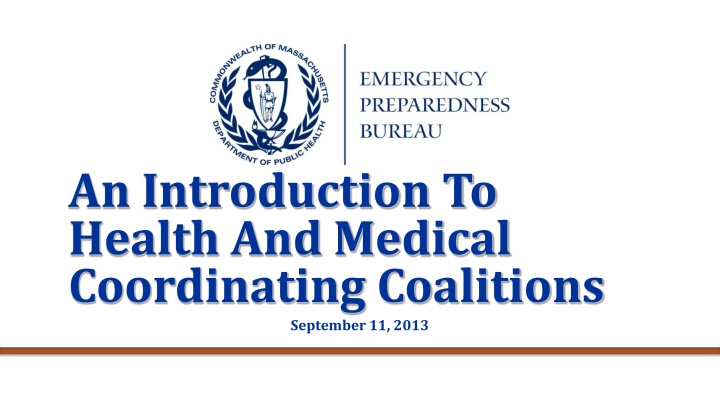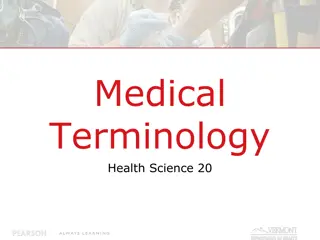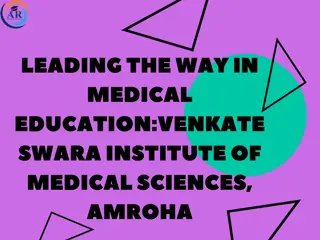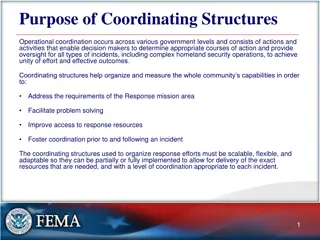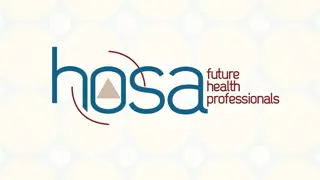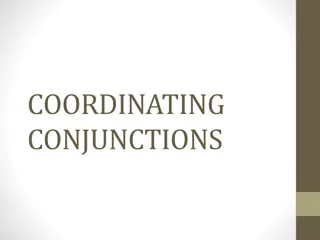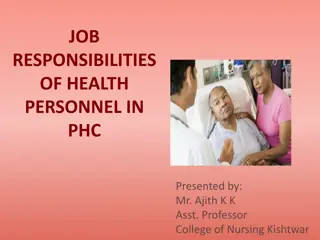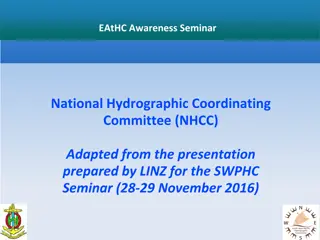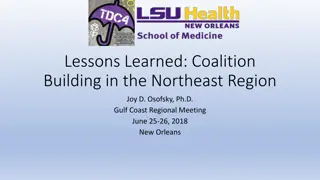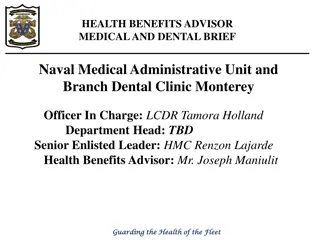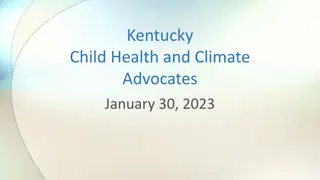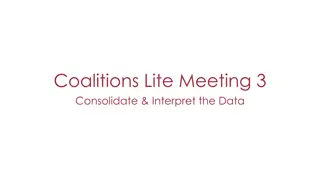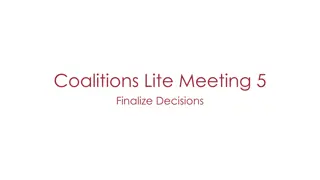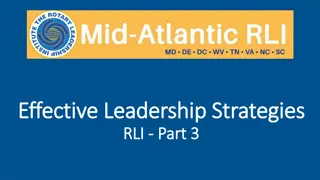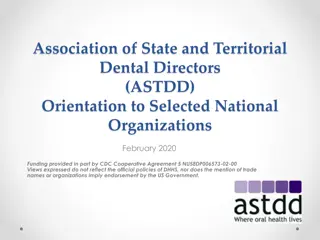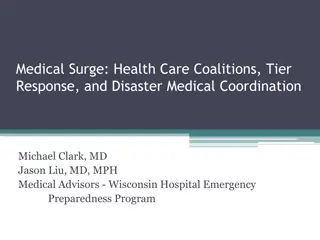Establishing Health and Medical Coordinating Coalitions
Enhancing health and medical capacity through coordinating coalitions ensures preparedness, response, recovery, and mitigation activities at regional levels. The focus is on adapting to changing priorities, improving disaster management capacity, and streamlining communication for better outcomes.
Download Presentation

Please find below an Image/Link to download the presentation.
The content on the website is provided AS IS for your information and personal use only. It may not be sold, licensed, or shared on other websites without obtaining consent from the author.If you encounter any issues during the download, it is possible that the publisher has removed the file from their server.
You are allowed to download the files provided on this website for personal or commercial use, subject to the condition that they are used lawfully. All files are the property of their respective owners.
The content on the website is provided AS IS for your information and personal use only. It may not be sold, licensed, or shared on other websites without obtaining consent from the author.
E N D
Presentation Transcript
An Introduction To Health And Medical Coordinating Coalitions September 11, 2013
INTRODUCTION Enhancing health and medical capacity across the disaster management cycle Responding to changing federal requirements Based on extensive literature review and national research Discussions with key leaders Beginning of a planning process 2
A COMPREHENSIVE, INTEGRATED REGIONAL APPROACH TO PREPAREDNESS AND RESPONSE Health and Medical Coordinating Coalitions (HMCC) are entities that will coordinate health and medical planning, response, recovery, and mitigation activities in each region HMCC =Healthcare Coalitions 3
HMCC RESPOND TO CHANGING NATIONAL PRIORITIES, BUILD REGIONAL CAPACITY TO SUPPORT LOCAL NEEDS Nationally Development and funding of regional health and medical capacity to prepare for, respond to, recover from, and mitigate the impact of disasters CDC and ASPR focus on preparedness planning, changing funding models Locally Absence of statewide regional structure to coordinate information & resources during an emergency A more integrated model of emergency preparedness and response across the Commonwealth 4
POTENTIAL BENEFITS Enhanced capacity for disaster management Resourced to provide 24/7/365 staffing More accurate and timely situational awareness Increased regional responsibility for deliverables Streamlined communications with ESF-8 Access to regional support 5
DR. PAUL BIDDINGER DR. PAUL BIDDINGER Director, Emergency Preparedness and Response Exercise Program, Harvard School of Public Health, and Chief, Division Of Emergency Preparedness, Massachusetts General Hospital
SUPPORTING ARGUMENTS FOR COALITION SUPPORTING ARGUMENTS FOR COALITION DEVELOPMENT DEVELOPMENT 24/7/365 Response Capacity Consistency of Capabilities Across Regions Continued Integration of Health Disciplines in Coordinated Planning and Response
ACTIVE ENGAGEMENT BY CORE DISCIPLINES Core Disciplines Community health centers and ambulatory care providers EMS Hospitals Local public health Long-term care Other healthcare disciplines Dialysis centers, urgent care, pharmacies, home health agencies Mental and behavioral health providers 8
OTHER PARTNERS Emergency management Public safety 9
EXISTING REGIONAL APPROACHES Legacy Entities Central Mass: Regional Medical Coordination Committee Boston: Boston Healthcare Coalition Other Regional Efforts Western Mass: Regional Medical Coordinating Group Cape and Islands: MACC Long-term Care: MassMAP 10
HMCC: BUILDING ON THE GAINS WEVE MADE Support effective cross-jurisdictional, multi-discipline planning for incidents too large in scale for a single jurisdiction or that grow beyond the capabilities of local response resources Address new, more specific federal expectations for public health and healthcare system preparedness and response capabilities and disaster management Incorporate and build on the gains made by the work of existing coalitions 11
THIS DIAGRAM IDENTIFIES THE HMCC ROLE ACROSS THE DISASTER CYCLE 12
WHAT WILL AN HMCC DO? Conduct regional all-hazards planning Develop and maintain emergency response capacity with roles filled through identified staffing complemented with voluntary response elements (e.g., public health mutual aid, MRC) Support a coordinated health and medical response with a regional point of contact for communication Coordinate information sharing for situational awareness and a common operating picture 13
WHAT WILL ORGANIZATIONS IN HMCC DO? Continue to develop and maintain organization plans Coordinate plans with HMCC Represent your organization to the HMCC Represent the HMCC to your organization Participate in HMCC planning and exercises 14
REAL WORLD EXAMPLES Marathon bombing response 2013 Region 2 Hospital Strike preparations to support patient care 15
City of Worcester Division of Public Health Region 2 DEREK BRINDISI MPA, R.S. DIRECTOR
Region 2 History May 2002 - Metropolitan Medical Response System (MMRS) 2003 - Public Health Emergency Preparedness (PHEP) January 2009 - Partnership for the Enhancement of Regional Preparedness (PERP)
Region 2 Collaboration Dialysis Fire Police Emergency Management
Region 2 H&M Coalition Strengths Mutual Aid Currently 10 acute care hospitals, 3 health centers, 2 specialty care rehabilitation hospitals, 74 long term care facilities and 68 local boards of health are members of regional mutual aid Regional Medical Coordination Center (RMCC) Patient placement, patient tracking, transportation, resource/equipment/staff needs, local/state liaison Situational Awareness WebEOC , mutual aid plan website, Listservs
Region 2 H&M Coalition Strengths Networking & Relationship Building Stakeholder meetings, workshops, drills, exercises Unified Vision & Strategic Plan Regional multi-disciplinary mitigation, preparedness, response, recovery Identification of strengths, challenges and gaps Region 2 HVA Conference September 2013
Region 2 Events June 2013 Worcester HazMat Incident Situational Awareness at Scene Worcester Health Care Situational Awareness POC, bed availability, facility capabilities May 2013 UMass Hospital Potential Labor Action Hospital Situational Awareness (local and regional) POC, capabilities, bed capacity, transportation vehicles Census Reduction Support Regional Medical Coordination Center: Patient placement, transportation and tracking February 2013 Blizzard Nemo Regional health and medical situational awareness Information Flow: WebEOC, listservs, mutual aid plan website
Contact Information Derek Brindisi brindisid@worcesterma.gov
WHAT HAPPENS NOW? September/October 2013 EPB and BUSPH attend meetings for each coalition to provide information and take questions EPB meetings with stakeholders from health and medical disciplines November 2013-June 2014 Facilitated multi-discipline meetings in all regions Technical assistance for development of HMCC 23
A PHASED TRANSITION TO NEW STRUCTURES HMCC Milestones By end of budget period (BP) 2 (June 30, 2014) Identification of participating entities Proposed Governance plan By Fall 2014 (mid BP3) Release of HMCC RFR By end of BP 3 (June 30, 2015) HMCC operations established 24-7 regional point of contact established Regional health and medical operations plan developed Begin exercising HMCC operational plans During BP 4 (June 30, 2016) By end of BP 5 (June 30, 2017) Exercised all HMCC operational plans Fully operational 24
For more information, including the ability to download The Case for Change document, recordings and transcripts of the webinar delivered on September 11th, and a copy of this presentation visit: www.bu.edu/sph-coalitions 26
